
Caracas, officially Santiago de León de Caracas (CCS), is the capital and largest city of Venezuela, and the center of the Metropolitan Region of Caracas. Caracas is located along the Guaire River in the northern part of the country, within the Caracas Valley of the Venezuelan coastal mountain range. The valley is close to the Caribbean Sea, separated from the coast by a steep 2,200-meter-high (7,200 ft) mountain range, Cerro El Ávila; to the south there are more hills and mountains. The Metropolitan Region of Caracas has an estimated population of almost 5 million inhabitants.

Chacao is one of the five political and administrative subdivisions of the city of Caracas, Venezuela. The other four are Baruta, El Hatillo, Libertador and Sucre. This legal entity is known as the Caracas Metropolitan District. Chacao is also one of the 21 municipalities that make up the State of Miranda, Venezuela.

Altamira is a neighborhood located in the Chacao municipality of Caracas, Venezuela. It has its own Metro Station, many hotels and restaurants, and it is an important business and residential center of the city. It is also an important tourist destination and cultural center in Caracas. The Francisco de Miranda avenue and the Distibuidor Altamira are both located in Altamira. This neighborhood borders El Ávila National Park to the north, La Castellana neighborhood to the west, Los Palos Grandes to the east, and Bello Campo neighborhood to the south. It has an estimated area of 161 hectares or approximately 1.61 square kilometers.

Municipalities of Venezuela are subdivisions of the States of Venezuela. There are 335 municipalities dividing the 23 states and the Capital District.
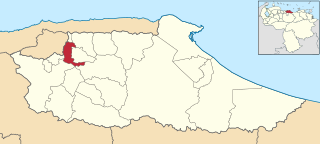
Baruta is a municipality within the Metropolitan District of Caracas in Venezuela.

El Hatillo Municipality is an administrative division of the State of Miranda, Venezuela; along with Baruta, Chacao, Libertador and Sucre, it is one of the five municipalities of Caracas, the capital of Venezuela. It is located in the southeastern area of Caracas, and in the northwestern part of the State of Miranda.

Dulce Nombre de Jesus de Petare is a neighborhood in Miranda, Venezuela, and is part of the Metropolitan District of Caracas. It is located in the Sucre Municipality, one of the five divisions of Caracas. The city was founded in 1621 under the name of San Jose de Guanarito. It grew to become a part of the Greater Caracas area as the latter expanded in area and population. Petare had a population of 372,106 inhabitants and about 448,861 according to 2020 estimates. Petare is the biggest slum in Venezuela, and in South America.

El Tigre is a city of Anzoategui, a state located east of Venezuela's capital city of Caracas. Located in what is called the "Guanipa Mesa", a river (Tigre) runs across the city. The average temperature is 79°F, all year around, and the annual average rainfall is 1,200mm. One nearby tourist destination is the Chimire Cliffs.

El Rosal is a neighbourhood of Caracas, Venezuela, in the Chacao municipality. It is located at East Caracas, near the geographic center of Caracas and is one of its financial centres. It has an estimated area of 50.9 hectares

East Caracas generally refers to the eastern portions of Caracas, and may refer specifically to the municipalities from the Metropolitan District of Caracas located in Miranda State: Chacao, Baruta, Sucre, and El Hatillo. It concentrates the 34.8% population of the Metropolitan District of Caracas, and the 21.7% population of the Greater Caracas Area. Caracas Country Club, the richest neighborhood of the city, is located between El Recreo and Chacao districts.
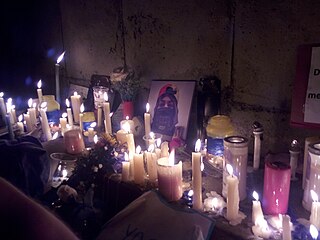
Neomar Alejandro Lander Armas was a Venezuelan barman and protester killed during the 2017 Venezuelan protests.

El Recreo Shopping Mall is a large shopping mall in the commercial, financial, tourist and cultural district of Sabana Grande, Caracas, Venezuela. According to Top Shopping Centers magazine, the mall averaged three million visitors per month in 2013-2014. At 28 metres (92 ft) and seven floors below grade, it is Latin America's deepest construction and part of the late-1990s real-estate boom in Sabana Grande. El Recreo Shopping Mall was designed by Venezuelan architects Carlos Gómez de Llarena and Moisés Benacerraf. The shopping center's twin towers—the 125-metre (410 ft) Citibank and Movilnet Towers—are the tallest skyscrapers in the Venezuelan capital. The mall is connected to the Gran Meliá Caracas Hotel.
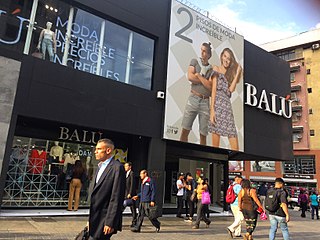
The Boulevard of Sabana Grande is an important leisure and shopping area located in eastern Caracas in the geographic center of the Metropolitan District of Caracas. It is a pedestrian-only, tree-shaded public space. In 2011, the boulevard of Sabana Grande went through a rehabilitation process founded by PDVSA La Estancia. A commercial and financial district, Sabana Grande is the commercial corridor, and a tourist district of Caracas. The boulevard of Sabana Grande is home to the most important ornithological collection in Latin America, the William Phelps Ornithological Collection. Until the beginning of the 20th century, it was called Calle Real because it was the town's main road.
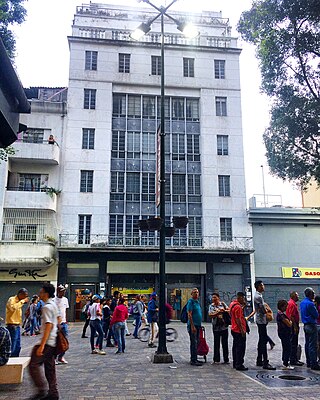
The William Phelps Ornithological Collection, also known as the Phelps Ornithological Museum, is a museum of natural sciences dedicated to the study, exhibition and preservation of the birds of Venezuela and the rest of Latin America. The collection is located east of Caracas and in the geographic center of Greater Caracas, in the heart of the Sabana Grande district. The William Phelps ornithological collection is the most important in Latin America and it is also the most important private collection in the world in its research area.
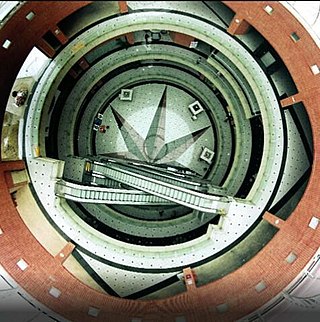
City Market Shopping Mall is an important shopping center located east of Caracas and in the geographical center of the Gran Caracas. It is part of the district of Sabana Grande designed by architect Enrique Feldman., Overall, he City Market Mall has a structure of 20 thousand square meters, five floors and 222 premises. Feldman took advantage of the strategic location of the project to integrate the mall with the Boulevard of Sabana Grande.

Plaza Venezuela is a Caracas Metro station on Lines 1 and 3. The Line 1 station was opened on 27 March 1983 as part of the extension of the line from La Hoyada to Chacaíto. The station is between Colegio de Ingenieros and Sabana Grande.
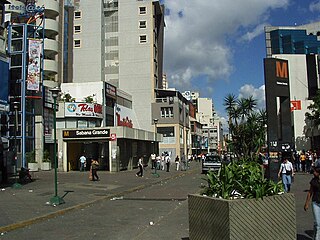
Sabana Grande is a Caracas Metro station on Line 1. It was opened on 27 March 1983 as part of the extension of Line 1 from La Hoyada to Chacaíto. The station is between Plaza Venezuela and Chacaíto.
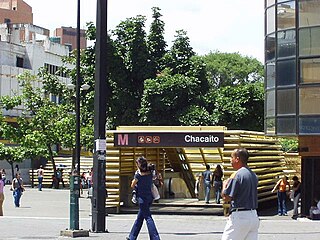
Chacaíto is a Caracas Metro station on Line 1. It was opened on 27 March 1983 as the eastern terminus of the extension of Line 1 from La Hoyada. On 23 April 1988 the line was extended to Los Dos Caminos. The station is between Sabana Grande and Chacao.



















